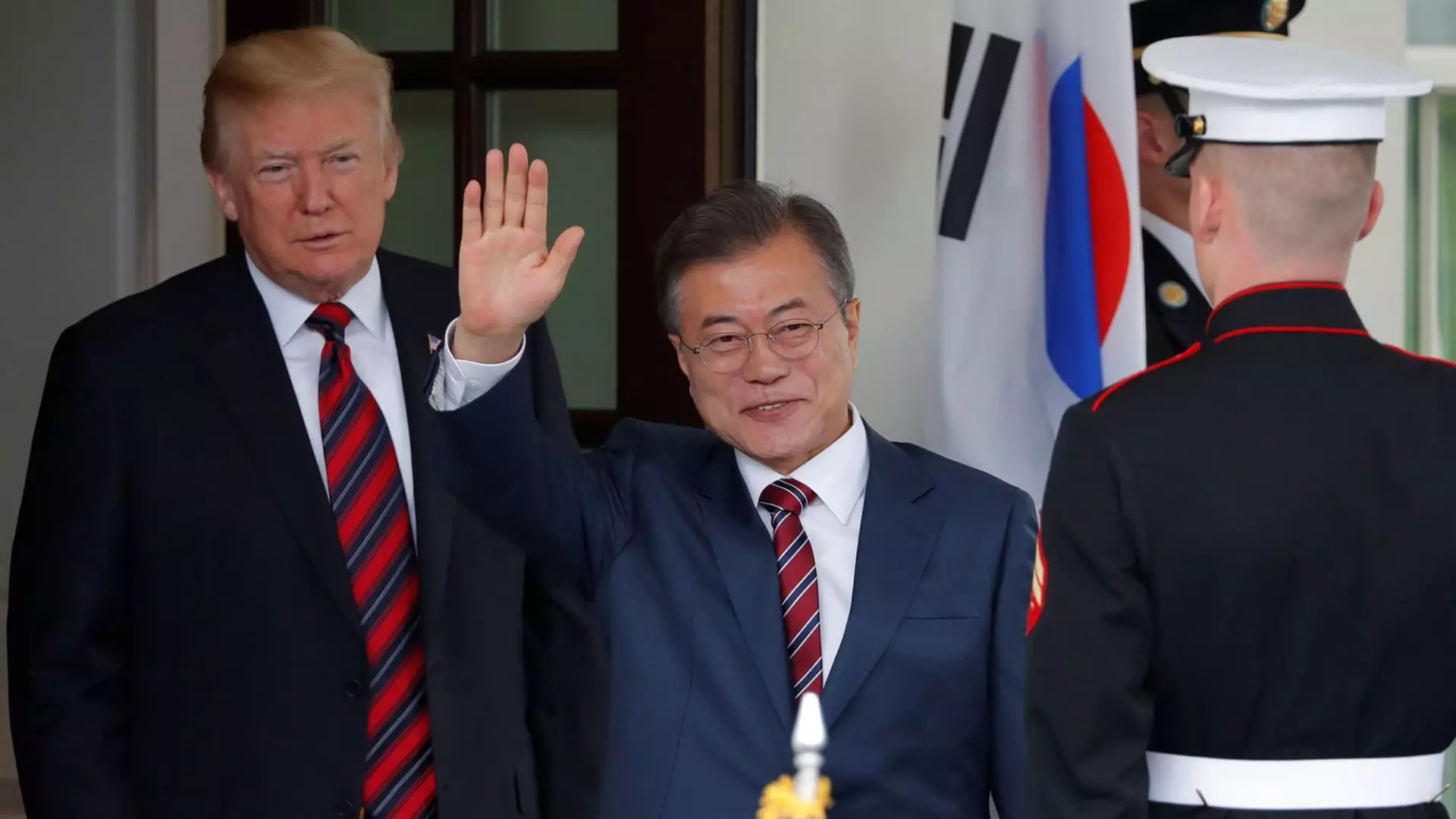The ongoing discourse surrounding international trade and tariffs has grown increasingly complex, particularly concerning the automotive sector. As former President Donald Trump considers imposing higher tariffs, the potential ramifications for car manufacturers, especially those based in South Korea and Japan, are far-reaching. These two countries play a pivotal role in the U.S. automotive market, contributing an impressive combined total of 16.8% of vehicle sales last year, with South Korean exports reaching record highs. Understanding the nuances of these trade relationships is key to appreciating the challenges that lie ahead for these automakers.
Recent analysis indicates that South Korea and Japan are significant players in the U.S. automotive industry, particularly as the largest non-North American vehicle suppliers. South Korea, having surpassed Japan and Canada in vehicle exports to the U.S. last year, has established itself firmly in the market. The absence of substantial tariffs on South Korean imports provides a competitive advantage for automakers like Hyundai and General Motors (GM), potentially shielding them from immediate financial strain. In contrast, Japanese automakers face a 2.5% tariff that further complicates their standing in an increasingly competitive environment.
Despite existing agreements that aimed to fortify trade relations—such as the renegotiated trade deal with South Korea during Trump’s administration—no significant changes have materialized that would directly benefit U.S. automotive exports to South Korea. A critical evaluation reveals a 16% decrease in U.S. passenger vehicle exports to South Korea—a sobering statistic for American manufacturers looking to broaden their market presence abroad.
Tariffs act as a tax on imported goods, effectively increasing the cost for companies that rely on foreign product lines. These additional costs are often passed onto consumers, potentially resulting in higher vehicle prices and a subsequent decrease in demand. The automotive industry, known for its delicate balance of supply and demand dynamics, faces a precarious situation. Any significant rise in vehicle prices may alienate potential buyers, creating a ripple effect that could impact overall sales and profitability.
Hyundai, as the largest exporter of vehicles to the U.S., is particularly vulnerable to these tariff threats. As GM’s imports from South Korea surge—from 173,000 vehicles in 2019 to over 407,000 last year—the stakes for both companies have risen considerably. Their reliance on South Korean manufacturing means that any adverse tariff decisions could result in substantial financial burdens. The situation is precarious, as raising prices in the face of tariffs may stifle the purchasing appetite of consumers looking for affordable vehicles.
While the automotive industry is built on principles of free trade, experts argue that the sector possesses a remarkable capacity for adaptation, albeit with the caveat that such adjustments take time. Terence Lau, a renowned trade expert, asserts that while minor tariffs might be tolerated, significant increases could disrupt profit margins drastically. He emphasizes that the industry can’t pivot overnight, underscoring the complexity of manufacturing and distribution networks reliant on global supply chains.
Ford’s CEO Jim Farley also echoes this sentiment, advocating for a comprehensive approach to tariff policy that considers all countries involved in vehicle imports. This viewpoint suggests that selectively targeting specific nations could unduly benefit competing importers while creating inefficiencies within the American auto sector. Companies must navigate these economic implications carefully, ensuring they position themselves to survive and thrive amidst shifting policies.
As tensions surrounding tariffs continue to escalate, the ramifications for the U.S. automotive landscape are both significant and uncertain. With Trump’s latest moves to employ “reciprocal tariffs” on nations with higher tariffs on American goods, the industry is left contemplating how such policies might unfold. Though discussions remain vague, the potential for sweeping changes looms large over the auto market.
Ultimately, as U.S. auto manufacturers brace for whatever tariffs may come, understanding the interconnectedness of global trade and the auto industry will be critical. The decisions taken now will not only affect the current market but could also shape the future strategies of automakers seeking resilience in an unpredictable economic climate. As the complexities of global trade evolve, the industry remains steadfast in its commitment to meet consumer needs while navigating the often-turbulent waters of international commerce.

